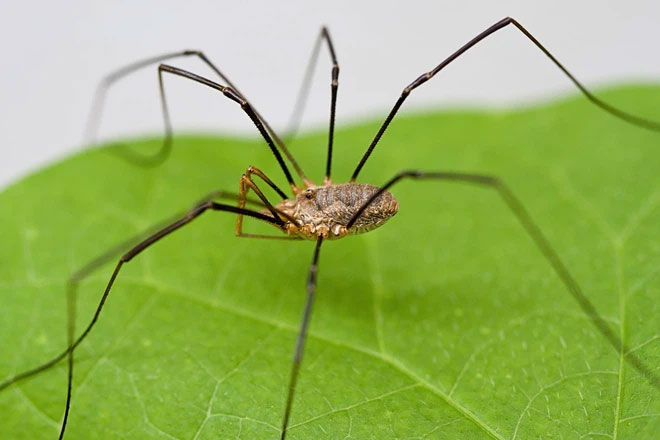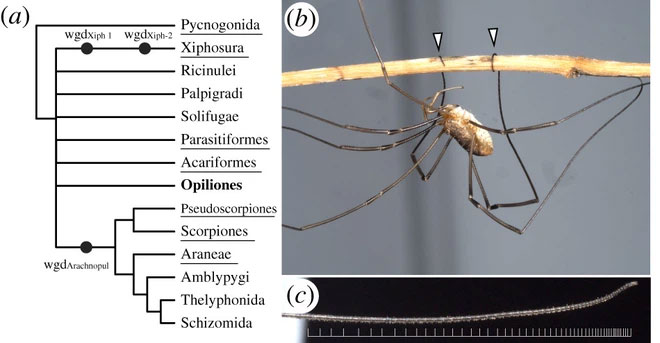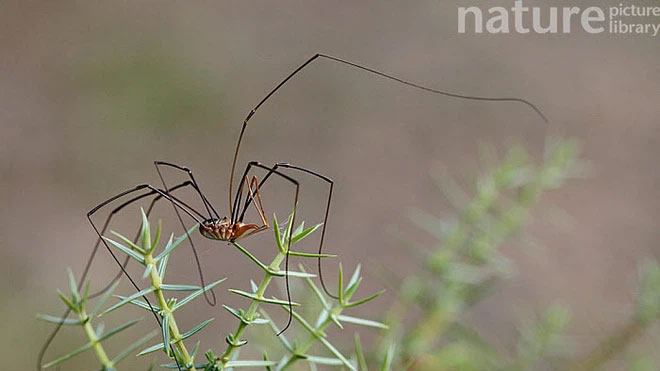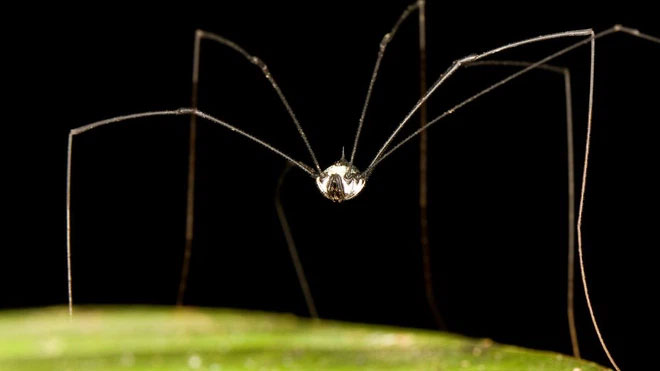Maci Currin, an 18-year-old American girl, currently holds the record for the longest legs in the world. Currin stands at 2.08 meters tall, with legs measuring over 135 cm (equivalent to 60% of her body height).
However, humans cannot compete with certain arthropod species when it comes to comparing the ratio of leg length to body size. In the animal kingdom, when we talk about long legs, we must mention the species Phalangium opilio, commonly known as the daddy long-legs arachnid.

Daddy long-legs arachnid.
These creatures can possess four pairs of legs that are ten times longer than their bodies, making them the champions of long legs in the animal world. The length of their eight limbs provides significant advantages for daddy long-legs during hunting expeditions.
Their diet typically consists of soybean pests, which is one reason why this spider species is often referred to as a farmer’s friend. Additionally, their oversized legs have inspired filmmakers in creating alien creatures.

Daddy long-legs used as inspiration for alien creatures by filmmakers.
However, this was before the daddy long-legs encountered geneticists at the University of Wisconsin, USA. In a study, they captured several of these spiders and genetically modified them to reduce their height by half.
This work involved monitoring the embryos of the baby daddy long-legs. The scientists discovered three active genes that contributed to the lengthening of the spider’s legs under a microscope.
Using a gene-editing technique known as RNA interference, they successfully turned off these three genes, resulting in the spiders’ legs shortening to just half their original length. Some of their legs even became so short that they transformed into pedipalps, which are small appendages near the mouth used for grasping food.
But why did the scientists do this?

Gene editing technique helps observe the evolutionary process of this species.
Guilherme Gainett, the lead author of the study and a geneticist at the University of Wisconsin, stated that the effectiveness of RNA interference in the species Phalangium opilio allows them to observe the evolutionary process of this species.
“The genome of the daddy long-legs has great potential to illuminate the complex history of its evolutionary process, how this spider species developed its body features, and acquired its unique long legs,” Gainett wrote.
In the future, similar techniques could be used to understand how other organisms have developed body parts. For example, why do scorpions transform their two front limbs into massive pincers?
Scientists could also create scorpions without pincers or with smaller pincers using RNA interference techniques.


Phalangium opilio has a body resembling a human with an oval segment.
In fact, Phalangium opilio is not actually a spider but is more closely related to scorpions. Some distinguishing features of Phalangium opilio include their inability to spin silk and the absence of venom glands.
While spiders typically divide their bodies into two parts, Phalangium opilio has only a body resembling a human with an oval segment.
In the next phase of their research, Gainett and colleagues aim to explore whether other spider species have evolved similarly to Phalangium opilio. Are there any differences in the genes responsible for leg length among different groups of arthropods?
“Looking ahead, our next interest is to understand how the genome produces external characteristics in spiders, such as fangs in spiders and pincers in scorpions. We also want to leverage gene techniques to further develop the first gene-transferred organisms,” Gainett said.
Their research has been published in the journal Proceedings of the Royal Society B: Biological Sciences.




















































